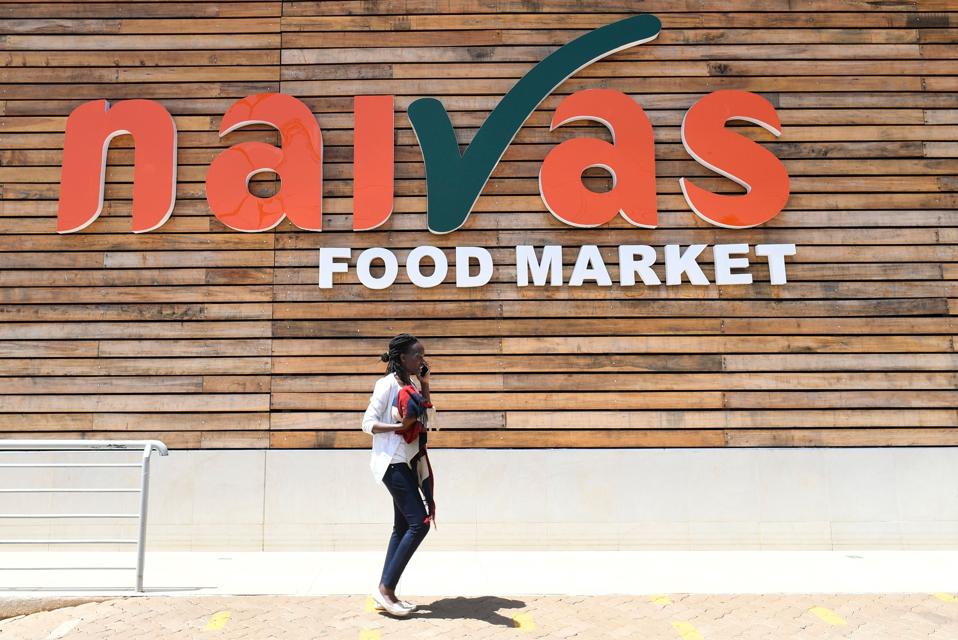A recent Economist article highlighted the recent growth of local supermarket chains across the African continent. Today, a staggering 70% of Africans buy their consumer staples from local vendors. What is driving this specialized, locally-focused retail on the continent? Three primary trends have been working hard behind the scenes to power this quiet explosion.
High Mobile Penetration Driven by Favorable Demographic Trends
The African continent is home to the youngest and fastest growing population globally. It is a tapestry woven of diverse demographic, religious, and sociopolitical dynamics. Significantly, it is home to a growing consumer middle class. Analytics firm Fraym estimates that there are 330 million people in this category, and two-thirds were in just five countries: Egypt, Nigeria, South Africa, and Algeria.
Mobile connectivity is a key theme for the continent. In 2023 alone, there were 489 million unique subscribers recorded across Sub-Saharan Africa. Compared to peers in other regions, African consumers are more reliant on their phones for banking and financial transactions. This is reflected in the mobile money boom: in 2020, Africans exchanged more than $490 billion via this widespread platform.
Mobile’s dominance on the continent is even more impressive in light of the woefully inadequate infrastructure that frustrates more often than it functions. 3G remains the most dominant technology in the region, and 5G represents a mere 3% adoption rate. Furthermore, Sub-Saharan Africa is home to some of the world’s highest mobile data prices. In light of these headwinds, the growth of mobile adoption in the region is even more impressive.
This high level of mobile penetration, coupled with inadequate infrastructure, means that there is a large gap in the needs of consumers on the continent. Entrepreneurs and venture capital funds alike have taken notice of this opportunity, contributing to a boom in early stage investing with a primary focus on fintech. Payments platforms are the recipients of a large portion of this funding, and this has spurred innovation and rapid improvements in end-to-end transaction processes.
Rise of Secondary Cities
Although much of the discourse around economic growth on the continent has been concentrated on urban mega-centers like Lagos, a quiet revolution has been underway in the continent’s pockets of small and mid-sized cities. Per the Economist, “of the 20 cities in Africa with the fastest-growing populations from 2000 to 2020, only one is a capital city (Abuja in Nigeria) and just five have populations of more than 1m people.” For intrepid thinkers, this rapid growth has opened up doors to acquire market share and win consumers in areas that are less served by traditional retail behemoths.
For example Marketsquare, a Nigerian supermarket, established its first store in Yenagoa. Today, it has opened more than two dozen stores in the country, driven by the growth in these secondary cities. Marketquare’s success also points to another trend on the continent: a heightened focus on regional preferences. Small grocers tend to dominate across the continent, with the exception of South Africa. A number of factors are behind this, from volatile currency markets, to inadequate infrastructure, to complex regulatory policies. E-commerce on the continent continues to grow, however lags behind peers in Latin America and Southeast Asia. This confluence of factors means that local retailers will continue to dominate consumer’s share of wallet, and be the key for driving further innovation.
Growing Digital Ecosystem
Lastly, while fintech has been powering growth in payments improvements on the continent, an increasing array of emerging technology providers is supplying innovative digital solutions to traditional retailers in the region. For example the Nigerian fintech Alerzo, backed by Nosara Capital, seeks to empower street-side vendors and shops by providing last-mile distribution to help stock inventory directly from manufacturers. It has also expanded its product offering to include enhanced e-commerce and logistics features.
The flourishing growth of local supermarket chains in Africa is driven by three pivotal trends. Firstly, the continent’s high mobile penetration, driven by favorable demographic trends, has created a unique landscape where mobile connectivity plays a central role in daily life and financial transactions. This has spurred a significant focus on fintech, with innovative payment platforms benefiting from increased investment. Secondly, the rise of secondary markets, particularly in small and mid-sized cities, has allowed local retailers like Marketsquare to thrive by catering to regional preferences and addressing gaps left by traditional retail giants. Lastly, the growing digital ecosystem, fueled by a surge in fintech companies and emerging technology providers, is transforming the retail landscape by empowering traditional retailers with innovative solutions.
What’s Next
As Africa celebrates the success of its local supermarket chains, these trends are likely to continue shaping the continent’s retail sector, fostering further innovation and economic growth. Although much of the discourse around the perpetual promise of the African continent has been mired by political instability and currency volatility, this steadfast growth in commerce in digital innovation highlights why the African continent ought to capture a larger share of global venture finding. In the words of an African proverb: no matter how long the winter, spring is sure to follow.

